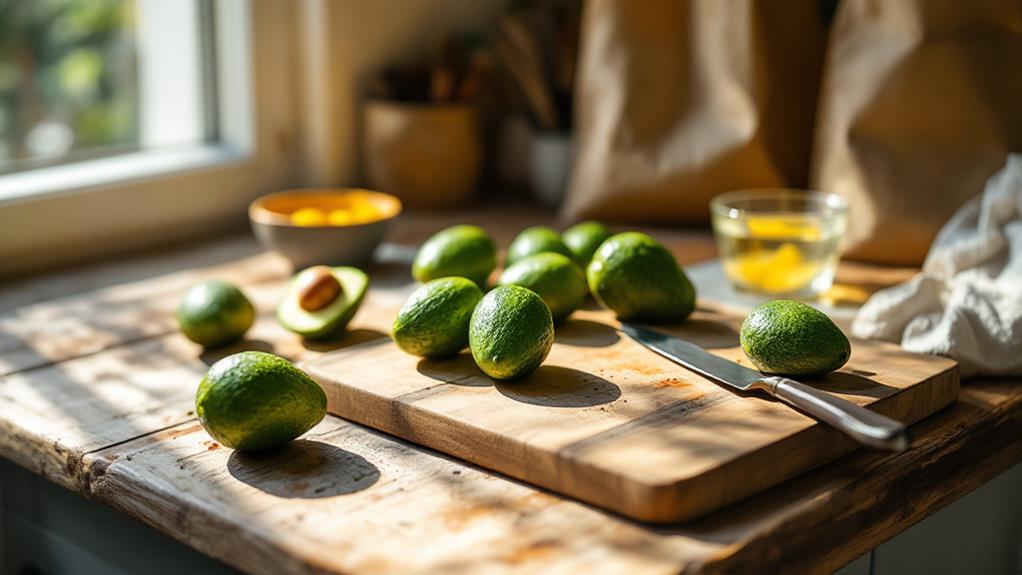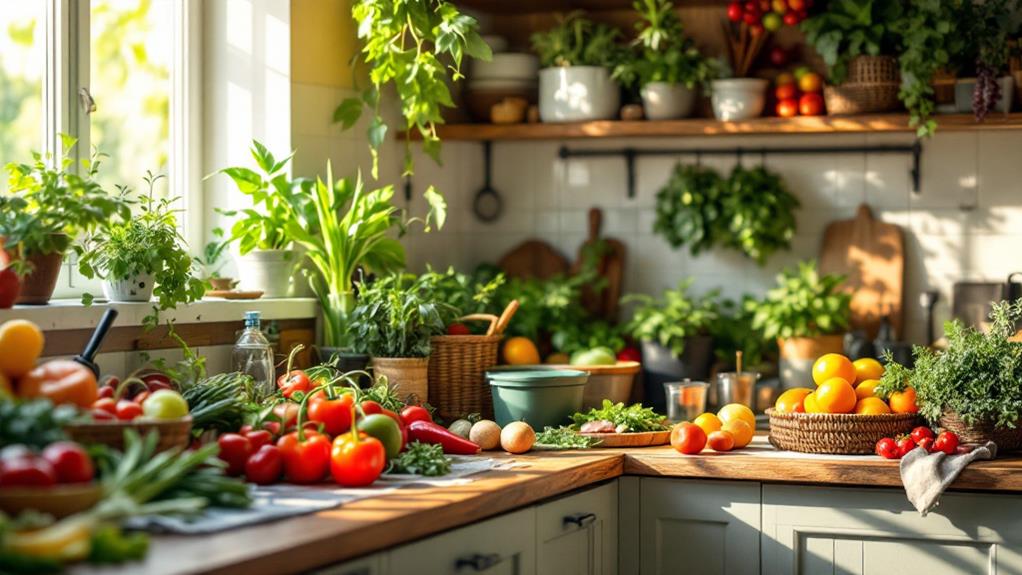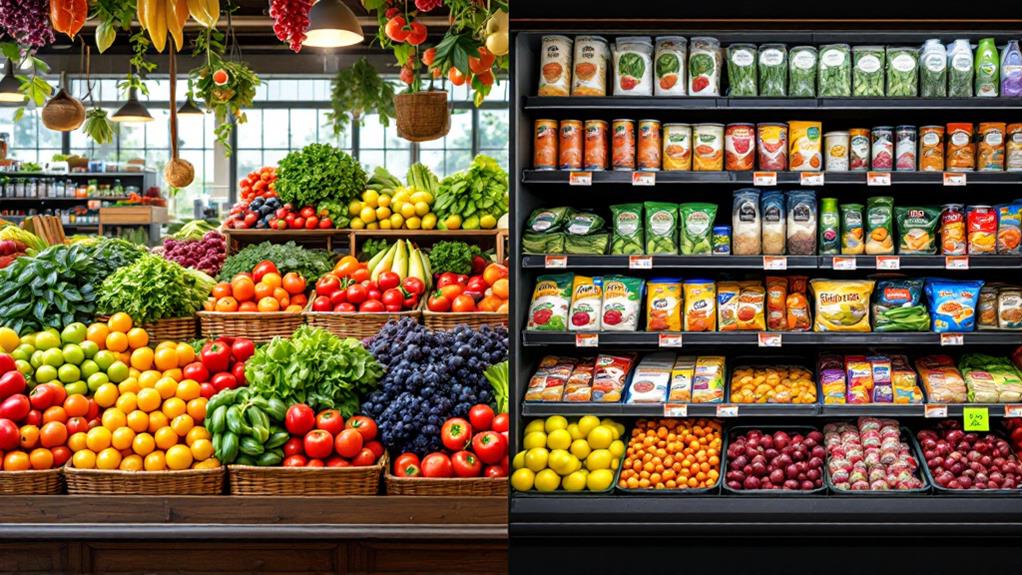How to Celebrate National Healthy Lunch Day: Tips for Nutritious Meals
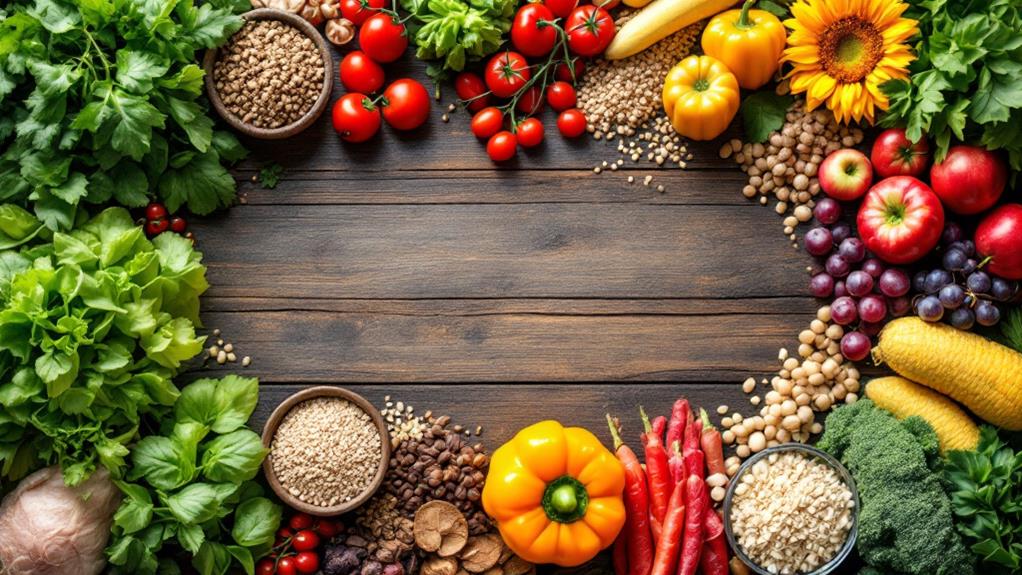
Celebrate National Healthy Lunch Day by creating balanced meals that include all five food groups: grains, protein, fruits, vegetables, and dairy. Opt for whole grains, lean protein like grilled chicken or tofu, and colorful veggies for a nutrition-packed lunch. Don't forget a dairy option like low-fat yogurt. Prioritize food safety by washing hands and separating raw from cooked foods. Get kids involved with suitable cooking tasks to make healthy eating fun. Choose wholesome snacks like fruits or nuts over processed options. Welcome sustainable practices by using reusable containers and seasonal ingredients. Uncover these tips for making lunch both healthy and enjoyable.
Plan Balanced Meals
Planning balanced meals is essential for celebrating National Healthy Lunch Day effectively. You'll want to guarantee your meal planning includes all five food groups: grains, protein, fruits, vegetables, and dairy. This approach supports healthy eating by providing important nutrients needed for comprehensive health.
Start with whole grains, like brown rice or whole wheat bread. These options provide fiber and sustained energy, keeping you energized throughout the day. Next, focus on adding a source of lean protein. Consider grilled chicken, beans, or tofu to encourage muscle growth and repair. These choices supply healthy fats and protein that are critical for your body.
Don't overlook the importance of colorful vegetables in your lunch. Aim for at least 1-2 servings to enhance your nutrient intake. This will help you reach the daily recommendation of five servings of fruits and vegetables. Ultimately, remember to include a dairy component like low-fat yogurt or cheese. These options provide calcium and vitamin D, vital for bone health, especially in children.
Prioritize Food Safety
Guaranteeing your lunch's safety is crucial for enjoying National Healthy Lunch Day without any health concerns. Start by washing your hands thoroughly with soap and water before handling any food. This simple step prevents bacteria from spreading and guarantees food safety. When preparing a healthy lunch, keep raw foods, especially meats, separate from ready-to-eat items like packaged foods, fruits, and vegetables. This separation helps avoid cross-contamination and reduces the risk of foodborne illnesses.
Cooking foods to the proper temperatures is significant. Make sure hot foods stay above 140°F and cold foods remain below 40°F to prevent bacterial growth. For those with young children, be vigilant about choking hazards. Cut round foods such as grapes and cherry tomatoes into quarters to make them safer to eat.
It's also critical to be aware of allergens. Familiarize yourself with allergen policies and avoid serving common allergens like peanuts, tree nuts, eggs, milk, fish, shellfish, sesame, soy, and wheat. This precaution helps protect individuals with food allergies. By prioritizing these food safety measures, you can enjoy a delicious and worry-free healthy lunch on this special day.
Engage Kids in Cooking

Getting kids involved in cooking is a fantastic way to make National Healthy Lunch Day both educational and fun. By assigning them appropriate tasks for their development like washing vegetables, stirring, or assembling sandwiches, you can engage kids in the kitchen and foster a sense of ownership in healthy cooking. This approach not only makes them excited about preparing meals but also teaches valuable skills.
Encourage your little chefs to choose a new fruit or vegetable each week. This encourages trying new foods and broadens their palates while introducing them to different flavors and textures. You can also boost their interest by allowing them to touch, smell, and taste different ingredients. This sensory exploration is key in developing a positive relationship with food.
Taking the opportunity to discuss nutrition, explain the benefits of using whole grains for energy or how vitamins in fruits and vegetables contribute to their health. This makes the process educational and informative.
Smart Snack Choices
With regard to making smart snack choices, focusing on nutrient-dense options can make a big difference in your health. When you choose snacks rich in vital vitamins and minerals, you help keep your energy levels steady and support your overall wellness. Opting for whole foods like fruits and vegetables guarantees that you're getting the nutrients your body needs without unnecessary calories. Here's a guide to making better snack decisions:
- Nutrient-dense choices: Go for snacks like fruits, vegetables with hummus, or whole-grain crackers. These provide crucial nutrients while keeping calorie intake balanced.
- Balanced snacks: Include a mix of protein and healthy fats, such as Greek yogurt with nuts or string cheese with apple slices, to keep you full and energized for longer periods.
- Whole foods over processed: Avoid snacks high in added sugars and sodium. Instead, select options like unsalted nuts, popcorn, or homemade granola bars for healthier alternatives.
- Plan ahead: Prepare snack packs with a variety of healthy options. Having these readily available reduces the temptation to reach for less nutritious snacks.
Don't forget to pair your snacks with hydration. Drinking water or herbal teas can help manage hunger and keep you feeling your best.
Sustainable Lunch Practices
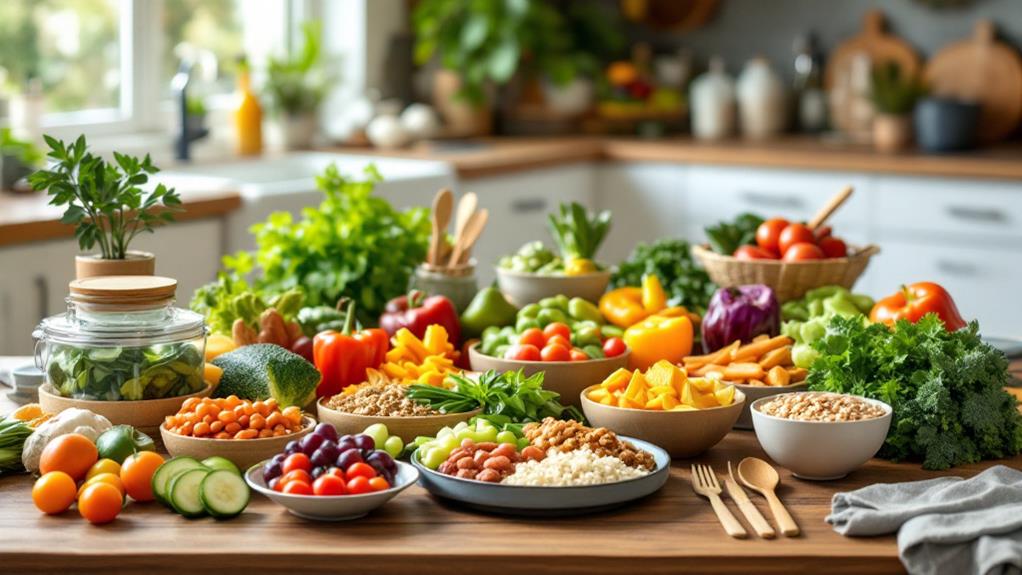
While making smart snack choices is significant, embracing sustainable lunch practices can further improve your commitment to health and the planet. Start by utilizing reusable containers and utensils. By limiting the amount of single-use plastics, you reduce the waste generated from packed lunches, contributing to a cleaner environment. When selecting food items, opt for seasonal and locally sourced ingredients. These choices support sustainable farming practices and decrease the carbon footprint associated with food transportation, allowing you to eat healthy while being eco-friendly.
Planning your meals is another key step. Use leftovers creatively to reduce food waste and enhance ingredients you've already purchased. This not only saves money but also makes healthier meals by ensuring a balanced diet without unnecessary waste. Consider incorporating plant-based proteins like beans and lentils. They have a lower environmental impact than animal proteins and provide vital nutrients, aligning with your health goals.
Encourage children to join in meal prep using fresh, whole foods. This involvement fosters an appreciation for both sustainability and healthy eating practices. By adopting these strategies, you're not just making sustainable lunches but also promoting a lifelong habit of mindful, nutritious eating.

